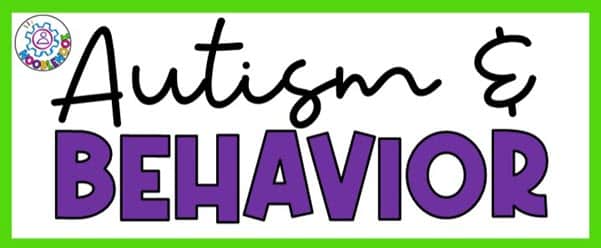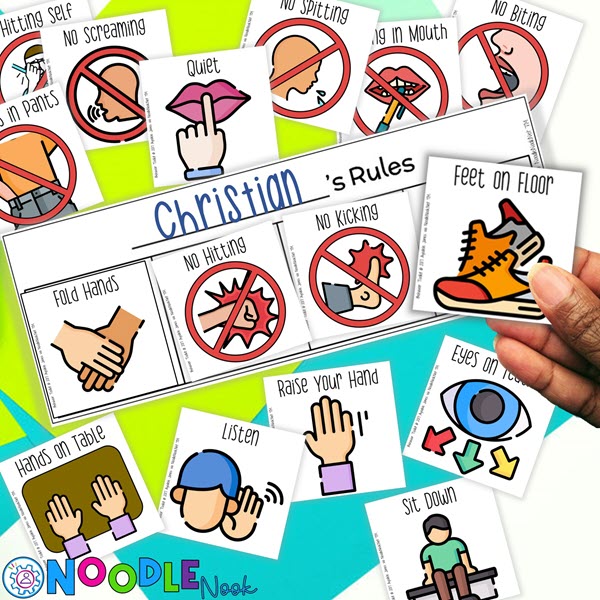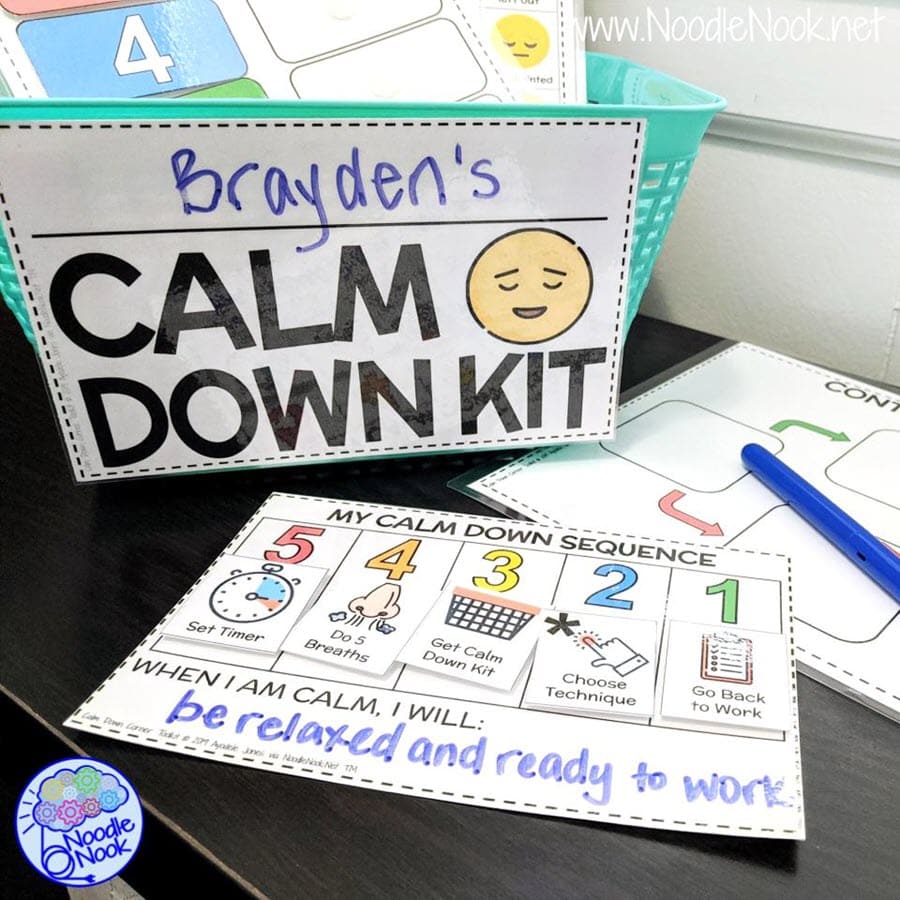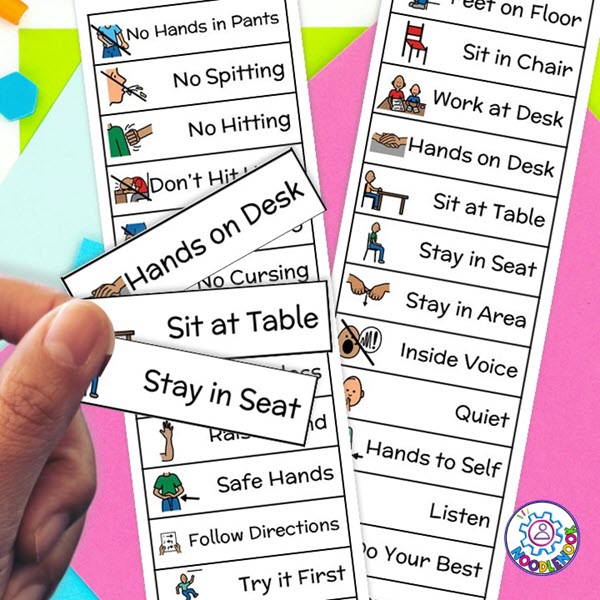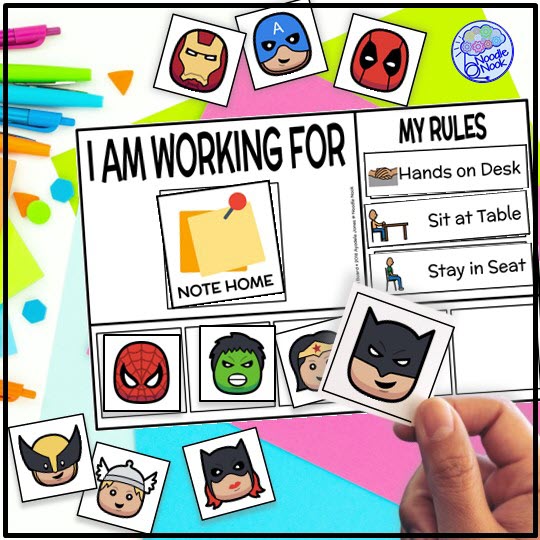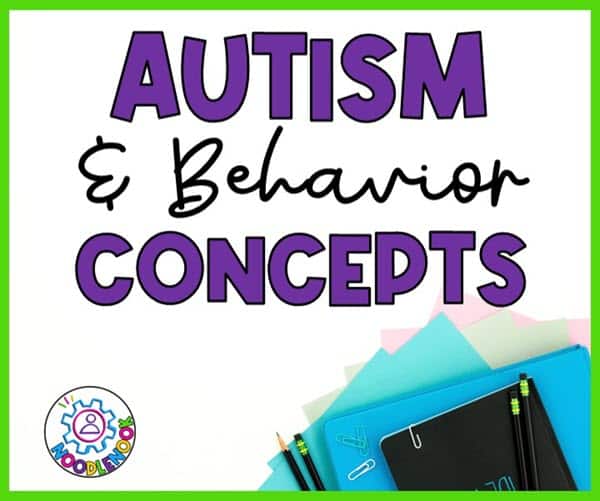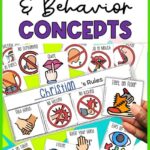Having worked in special education for nearly 20 years, including time supporting teachers and parents, I can tell you one thing for sure: It can be difficult to address significant behaviors in individuals with autism spectrum disorder (ASD) or with developmental disabilities. Every year, more and more teachers enter the classroom. Some are on emergency licenses or just finished an intensive alternative certification program. With both, it is essential to establish some key concepts. In this post, we’re covering autism and behavior concepts that every teacher should know. They’re evidence-based practices that are the fundamentals of behavioral support. If it feels like you’re at the end of your rope because of challenging behaviors, don’t worry. We’re here with a fresh approach and some best practices that will lead to meaningful change. Let’s get started!
Understanding Autism Spectrum Disorder
First and foremost, ASD is not the same for everyone. It’s a spectrum for a reason. The autism classification covers a wide range of differences that affect social skills, communication skills, and learning. Obviously, each of these essential skills plays a significant part in a student’s ability to be successful in the classroom.
With the prevalence of autism consistently on the rise, more and more teachers are supporting students who struggle with social interaction, who have significant behavior, or who cannot communicate effectively. Since each of these has a direct impact on how a student learns within the classroom, it becomes critical to understand autism and behavior concepts.
As we get started, please note that Using applied behavior analysis has become increasingly controversial within the classroom over the last few years. As we discuss behavioral concepts and apply the science of behavior some ideas are in line with ABA programs while others take the best of what ABA has to offer and balances that with quality of life. If you are going to go on a comfortable with ABA services or hardline behavioral therapy, rest easy. The strategies below are going to build upon behavior analysis, positive reinforcement, and learned behaviors.
Behavioral Challenges in Autism
For individuals who struggle with communicating and interacting like non-autistic children, behaviors often become the language of expression. In order to become behavior technicians and make significant changes in a child’s behavior and social development, we have to use a consistent and scientific approach. Challenging behaviors can vary widely, from self-injurious actions like head-banging to repetitive behaviors or elopement. These behaviors are challenging and they interfere with academic success.
As teachers, we play important roles in addressing these behaviors through replacement behavior and positive rewards. To provide the best and most detailed strategies to get you positive outcomes, there are related blog posts for some specific behaviors that occur frequently. Additionally, if you are still wondering about why individuals with autism have specific behaviors, check out this post “Why Do Kids with Autism Do That?“
Self-Injurious Behaviors
Self-injurious behaviors, such as head-banging, are not uncommon for individuals with autism. It’s important to recognize that these behaviors often serve as a way for individuals to cope with overwhelming sensory experiences, like loud noise. They also serve as a way to communicate when traditional methods fail.
Safety takes priority when dealing with self-injurious behaviors. It is critical to understand the triggers and underlying reasons for these actions. Completing a functional behavior analysis and understanding the root cause of this behavior comes first. Knowing the motivation and mental states of students who hurt themselves can determine the specific strategy you use to address it. If you would like more information on how to determine the function of behavior, read this blog post.
Sometimes we approach dealing with this type of behavior differently. To get specifics on how to support students who are exhibiting this type of challenging behavior, check out the following articles. They go into detail on how to manage and teach new skills.
Overall, when you have a student who is hurting themselves, you will find the function of the behavior and do your best to find a replacement behavior that is not harmful.
Aggressive Behaviors
I’ve worked in classrooms where I was the target of aggressive behaviors every day. I can tell you that when you work with a student who is aggressive towards you, it can make you rethink your entire career. That means addressing aggression is a must. These behaviors might manifest as hitting, pushing, biting, or other forms of physical aggression. Just like with self-injurious behaviors, we’re going to focus on positive reinforcements, swapping learned behaviors with replacement behaviors, and a safe approach that keeps everyone safe.
For teachers and parents, the safety of everyone involved is paramount. That starts with not taking it personally. Sometimes aggressive behaviors arise due to various triggers, like sensory overload or frustration related to communication. It might not be you, you just might be the closest thing when the aggression is sparked. That means understanding triggers and the underlying reasons behind the aggression is key to effective support. Check out these blog posts that address common behaviors related to aggression.
Again, addressing this behavior starts with understanding the function of the behavior. From there, look for a replacement behavior that meets the same function but without harming others.
Destructive Behaviors
Destructive behaviors damage things… oh, how they can damage things! There have been times when I wished I was hit instead of having to replace a broken item in my classroom. Broken materials or destroyed property in class hits you in the gut, and then in the pocketbook. Again, these behaviors often stem from a variety of factors. Those can include things like sensory sensitivities, communication difficulties, or emotional distress. Either way, in order to maintain a safe and supportive learning environment for everyone, we have to find a way to address these behaviors in a non-destructive manner.
Understanding the triggers is the best place to start. By identifying the specific causes, you can develop strategies to manage and mitigate the behaviors. You can also identify the specific things you want a student to learn in order to be more constructive in how they choose to express wants and needs. These blog posts are very helpful in addressing destructive behaviors.
Don’t forget as you address these behaviors to always keep rock-solid data so you know if the strategies that you’re implementing are effective.
Work Refusal and Elopement
Work refusal is not a behavior that is exclusive to individuals with autism. That means knowing what to do when a student refuses to work can help you support all the learners in your classroom. Tapping into what a student is interested in and finds motivating is an evidence-based practice to improve student engagement and learning in the classroom. That means knowing exactly what your student prefers and what lights their fire can be helpful in addressing work refusal.
It’s also important to note that elopement often happens because a student wants to escape the work that’s being asked of them in the classroom. When a student is not engaged or is hesitant to participate, we see work refusal behaviors increase. Unfortunately, this often leads to more of the behaviors we’ve already covered. To deal with work refusal and elopement, check out these posts.
Elopement is not just specific to work refusal. Development can happen for a lot of different reasons, which, again, is why understanding the function of behavior is so critical. If you are targeting engagement and motivation in the classroom as a way to avoid refusal and elopement, you need token boards! They are my go-to behavior tool. You can read more about how to use token boards here.
Attention-Seeking Behaviors and Trigger Words
When a student displays attention-seeking behaviors within the classroom, they can be wildly disruptive. It’s common for these types of behaviors to garnish positive consequences even when not intended. The next time your class clown is going to town consider the strategies from the posts below to address your attention seekers.
In order to make sure that you’re applying the appropriate strategy to address specific behaviors, make sure that you really do understand the function of the behavior. It could be what you determine is attention-seeking is actually avoidance. Or, just as likely, you can confuse laughter as attention-seeking when it is communication-based. Be sure you know why a student is exhibiting behaviors so you can address them appropriately.
Best Practices in the Classroom
When you’re looking to address behaviors in the classroom and want a connection between autism and behavior concepts, there are a few best practices that you can put in place. Remember, these behavior concepts establish the foundation that you’ll build your classroom management upon. That means you act with confidence and consistency when you use these things:
- Individualized Support: Recognize that each student with autism is unique. Tailor your support to their specific needs, considering their strengths and challenges. Personalized strategies can make a significant difference. If you want to get an idea of behaviors that are common with students who have autism, check out this post to get an Autism Behavior Checklist.
- Clear and Consistent Communication: Use clear and concise language. Visual supports, like schedules, social stories, and communication boards can enhance communication and help students understand expectations. Get FREE communication boards here.
- Visual Supports: Visual supports, like schedules, rule cards, and checklists provide structure and predictability. That reduces anxiety for many students with autism. Use visual cues to help students with autism. I love this collection of behavior visuals that are perfect for students with autism. Check that out here.
- Positive Reinforcement: Implement positive reinforcement strategies. Praise and rewards can motivate students and reinforce desired behaviors. Make the reinforcement meaningful to the individual. If you don’t have token boards already, get them for your students! Learn more about Positive Punishment in this post.
- Social Skills Training: Social skills are essential for students with autism. Explicitly teach social norms and provide opportunities for practice in structured settings. I suggest using social stories and role-play activities to capitalize on evidence-based practices to build these skills. Read more about social stories and how to use them here.
- Sensory Supports: Be mindful of sensory sensitivities. Create a sensory-friendly environment and offer sensory breaks when needed to help students self-regulate. Check out this list of the best stim toys for autism.
- Data Collection: Regularly collect data on student behavior. This helps you monitor progress, make data-driven decisions, and adjust strategies as needed. This set of data collection sheets specifically for behavior makes it easier to track frequency, intensity, or duration. There’s also a set of guides so you know which sheet to use for specific behavior tracking. To learn more about behavior data collection in the classroom, check out this post.
By incorporating these best practices into your teaching routines, you can create an inclusive classroom environment that supports students with autism. Plus, you can rest assured the strategies you’re using are research-based and proven to be effective.
RECAP: Autism and Behavior Concepts -Fundamentals of Behavioral Support
When it comes to the fundamentals of behavior support in the classroom, there are a lot of things to consider. For students with autism, social challenges and communication difficulties often drive disruptive behavior. And since these behaviors can change over time, I suggest you do one thing. Bookmark this article so that you have access to all the related behavior posts in one place. These strategies will help pair working with students who have autism and behavior concepts that are evidence-based. Keep learning, be consistent, and know that I am here to help. Together, we can make a positive impact, one student (and one behavior) at a time.
If you love this post and want to get more tips and ideas in your inbox, we’d be honored.

